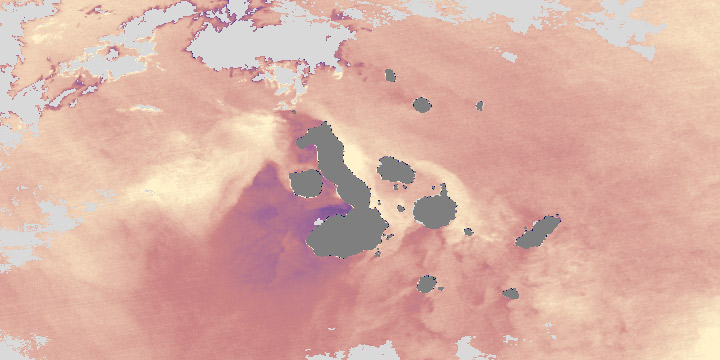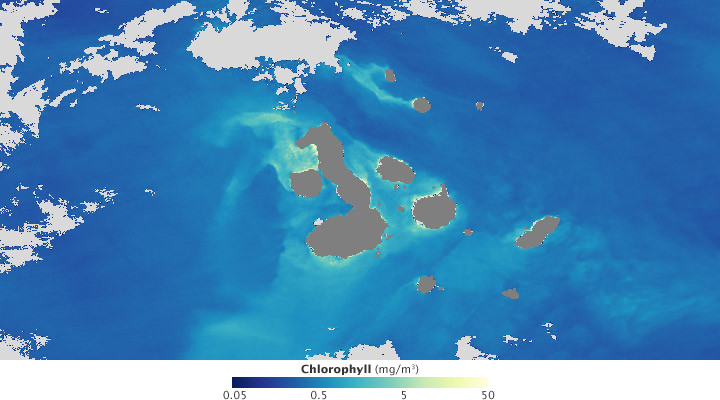



Of all the places in the world, there’s no place like the Galapagos Islands. The 19 volcanic islands are relatively new in geologic time, ranging from one to four million years old, with new islands still sprouting. They sit along the equator, between 700 to 1,000 kilometers (435 to 621 miles) from the nearest land masses. The isolation has made the islands a natural laboratory for evolution that not only famously inspired Charles Darwin, but continues to fascinate scientists today. In July 2009, NASA oceanographer Gene Feldman set out for the Galapagos to study the unusual currents and abundance of life in the waters offshore. He will blog about his experiences on the Earth Observatory.
The marine life in the seas surrounding the Galapagos is influenced by unique oceanographic conditions. These images from NASA’s Moderate Resolution Imaging Spectroradiometer (MODIS) aboard the Aqua satellite on March 2, 2009, show how the currents around the Galapagos affect sea life.
The deep Cromwell Current flows eastward from the middle Pacific and slams into the islands, pushing deep, cool water (blues and purples) to the surface. Deep waters accumulate nutrients that settle down through water column over long periods of time. When these waters well up to the surface, they nourish phytoplankton, which form the base of the ocean’s food web. Many fish, birds, and marine mammals depend on the phytoplankton. The lower image shows how life responds to the nutrient-rich water. Thriving phytoplankton populations are indicated by high chlorophyll concentrations, colored green and yellow.
Feldman has studied the Galapagos his entire career—but has never visited. This year, he will attend the Galapagos Science Symposium, followed by a short research cruise. Feldman and his colleagues will study the oceanographic conditions that make the waters around the Galapagos so fertile for life and its evolution. They will also look for signals of climate change and how it affects marine ecosystems.
NASA images by Robert Simmon and Jesse Allen, based on data from the GSFC Ocean Color team. Caption by Mike Carlowicz and Robert Simmon.